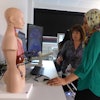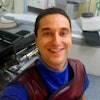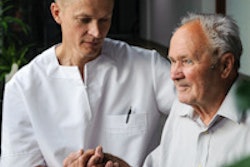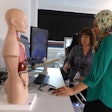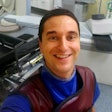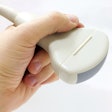
Have you ever wondered how some speakers just manage to capture everybody's attention from the start and leave a powerful impression? Would you like to become more confident standing in front of an international audience? Then please read the great top tips from Dr. Regina Beets-Tan. Learn how to make the listeners feel your enthusiasm, the importance of simplifying presentation material, and that even very experienced speakers prepare lectures meticulously.
ECR Today: How do you capture the audience's attention from the start? How do you maintain interest and avoid "death by PowerPoint"? Are there any ways to make yourself stand out from other speakers?
Regina Beets-Tan: The first few minutes of your lecture are the most important to convince your audience to listen to you. Most people will stop listening to you if they're not convinced that there is "something in it for them."
 Dr. Regina Beets-Tan is a professor of radiology, specializing in abdominal and oncologic radiology, and chair of the department of radiology at the Netherlands Cancer Institute in Amsterdam. She is also the editor in chief of ESR News, the society's monthly electronic newsletter.
Dr. Regina Beets-Tan is a professor of radiology, specializing in abdominal and oncologic radiology, and chair of the department of radiology at the Netherlands Cancer Institute in Amsterdam. She is also the editor in chief of ESR News, the society's monthly electronic newsletter.Here is my tip for how to capture the audience's attention at the start and throughout the entire lecture. You have to get your audience to "feel something." They must feel that you know what you're talking about, feel that you're excited about sharing your work and passion with them, feel that you're the right person to teach them and that they're going to learn from you. Know your audience so you can ensure that your information will be appropriate to their needs.
Give a confident and powerful introduction.
Your appearance should be authoritative. Dress appropriately and preferably in formal attire. Do not show any nervousness, even if you are nervous. Allow yourself a few moments on the podium before you start talking. Don't hide behind the podium. Make sure that your first slide and your microphone are set. Connect with your audience and make eye contact.
Your audience must feel that you are a kind person and pleasant to listen to. If invited to a meeting abroad, address your host organizer. Express your gratitude for the opportunity to lecture at their meeting and to visit their country. You will please the host and also the audience, many of whom will most probably be from the organizing country. This will help you to break the ice and get you beyond the first uncomfortable moments.
Presentations usually require submission of PowerPoint slides. How do you decide the presentation structure and how much text to include in slides? Should you use images? What about copyright of images found on the Internet? What are the most common mistakes regarding PowerPoint slides?
The most common mistakes in a PowerPoint presentation are "busy slides." Often you'll see slides with various font types, screaming colors, whole sentences (that are read aloud), and tables with tiny letters. SIMPLIFY, SIMPLIFY, SIMPLIFY. The slides should be kept clear and clean. The look and feel of a presentation is important -- an "Apple-look feeling." Slides ideally should contain only bulleted keywords or phrases, with a maximum of five to seven lines per slide. Images are very important to illustrate your messages: "A picture is worth a thousand words." We radiologists have the privilege of "painting" our messages.
Timekeeping is an essential point for presenters and can make the job of session moderators difficult. How do you ensure you keep to time limits? What can you do if you are running over time toward the end?
Running out of time is a frequent pitfall, not only for beginners, but also for experienced lecturers. Plan your presentation carefully. For beginners, learn your text by heart. Keep your sentences short and succinct. Rehearsing multiple times will help you to feel more confident, ensure that you will keep to the allotted time and prevent weakening your presentation at the end because you're running out of time. The closing of a lecture is very important. You want the audience to remember what you've said and what you want them to take home. Make sure you present your final slides with clear take-home messages, delivered with power and professionalism.
Do you use humor in your presentations? Which kind of humor is appropriate? When can it go wrong?
I personally am not so keen on using humor during my lecture, especially not with an international audience. What some cultures may think of as funny, others may find inappropriate or even offensive. So be cautious with jokes unless you know your audience very well.
What are the best presentations you have attended? What made them stand out and why did you remember the speaker?
The best lectures I've attended were those of authorities, who shared their knowledge with passion and were full of energy and enthusiasm, especially those lectures that were short (not more than 10 to 15 minutes) yet comprehensive. Contrary to what one might believe, these lectures are the ones that are prepared thoroughly. Marcus Cicero, a Roman philosopher, once said, "If I had more time, I would have written a shorter letter." This is so true, also for lectures.
How would you advise to prepare for and deal with questions from the audience? Can you communicate with the session moderator in advance?
I advise young presenters to rehearse their oral presentations in front of a small audience, for example, some colleagues in the department. You can learn from their feedback on your performance and on your slides, and it will give you more insight into which questions may arise.
There is no harm in contacting your moderator in advance. A moderator is glad to have some information on what you're going to present. And he is more than happy to assist you in delivering a clear message.
Do you have any other tips or suggestions?
Each time during the past years that I've lectured around the world, I have considered myself privileged to have been given the opportunity to share my work. It was extremely rewarding when I noted during the next visit that my knowledge had been transferred, the message captured, and the work implemented in practice for better patient care. This, after all, is what it's all about. So each time you will have the opportunity to present your work in front of an audience, remember that you are contributing to spreading the message of "better imaging for better patient outcome." And this makes each presentation, even if not perfect, an important one. Good luck!
Interview conducted by Dr. Christiane Nyhsen, consultant radiologist at Sunderland Royal Hospital, U.K.; member of the editorial advisory board of AuntMinnieEurope.com; and former chairperson of the ESR Radiology Trainees Forum.
Originally published in ECR Today on 5 March 2016.
Copyright © 2016 European Society of Radiology
